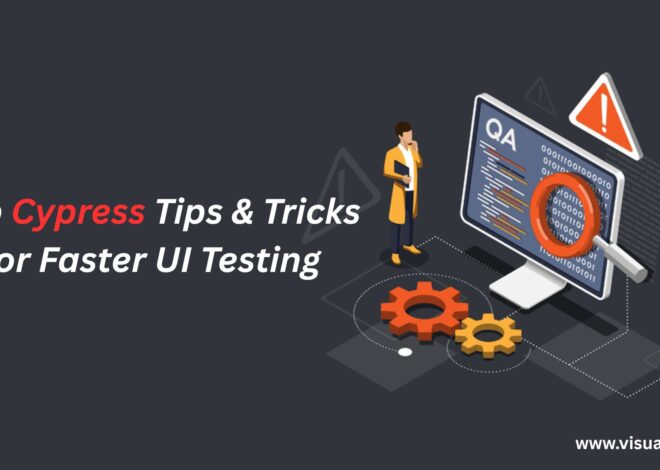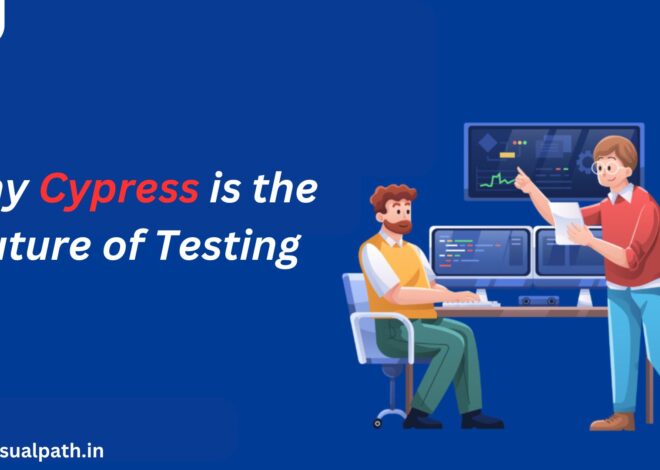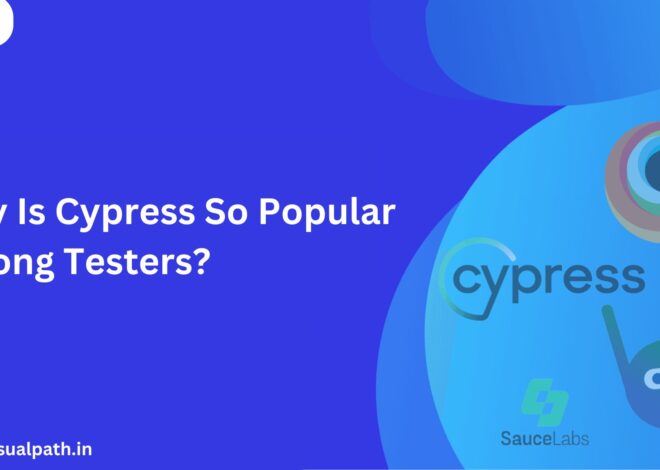Cypress Training: How to Handle Alerts and Popups in Cypress?
Introduction:
Cypress Training is essential for mastering the art of handling alerts and popups during automated testing. Alerts and popups are common in modern web applications, and managing them effectively is crucial for creating robust test scripts. Cypress simplifies the process with its intuitive API and automatic handling of browser behaviours, making it a preferred choice for testers. This guide will explore how Cypress handles alerts and popups, offer actionable tips, and explain why Cypress Online Training and Cypress Automation Training are indispensable for professionals aiming to excel in web testing.
Overview of Alerts and Popups
Alerts and popups are small windows that appear to display messages or request user interaction. They are typically used for notifications, confirmations, or warnings in web applications. Common types include:
- Alert Boxes: Display messages requiring the user to acknowledge by clicking “OK.”
- Confirmation Boxes: Provide users with “OK” and “Cancel” options to confirm or reject an action.
- Prompt Boxes: Allow users to input data while offering “OK” and “Cancel” options.
Handling these popups is critical for ensuring seamless test execution and verifying application behaviour. This is where Cypress Automation Training becomes valuable, as it provides in-depth knowledge of managing such scenarios.
How Cypress Handles Alerts and Popups
Cypress offers built-in support for managing alerts and popups. It automatically handles these browser-native behaviours without requiring complex configurations. Here’s how it works:
- Automatic Handling of Alerts:
Cypress listens for window.alert() events and prevents them from interrupting the test flow. You can verify the message displayed in the alert using Cypress commands. - Handling Confirmation Popups:
For window. Confirm () events, Cypress automatically clicks the “OK” button. You can control this behaviour and even simulate rejecting the confirmation. - Working with Prompt Boxes:
While Cypress doesn’t directly handle prompts due to security restrictions, workarounds like stubbing methods or using custom commands can help. - Customizing Popup Behaviour:
Cypress allows testers to overwrite default popup behaviours to simulate various scenarios and test edge cases effectively.
Understanding these capabilities is a critical aspect of Cypress Training, enabling testers to streamline their testing processes.
Importance of Handling Alerts and Popups in Testing
Alerts and popups often contain critical information or functionality, making their validation essential. Proper handling ensures:
- Seamless Test Execution: Tests don’t break due to unhandled popups.
- Improved Accuracy: Alerts are validated for the correct messages and behaviour’s.
- Enhanced User Experience: Ensures the application behaves as expected for end-users.
- Thorough Testing: Covers all possible interactions, including edge cases.
Investing in Cypress Online Training ensures that testers can confidently handle these scenarios, improving test reliability and coverage.
Tips for Handling Alerts and Popups in Cypress
- Leverage Built-In Methods:
Utilize Cypress’s built-in event listeners to handle alerts and confirmations without extra configurations. - Validate Popup Messages:
Always validate the content of alerts and popups to ensure the correct messages are displayed. - Simulate User Actions:
Test different scenarios, such as accepting and rejecting confirmation popups, to cover all possible user interactions. - Use Custom Commands:
Create reusable custom commands to simplify handling popups, especially when dealing with complex scenarios. - Stub Browser Methods:
Overwrite methods like window.alert and window. Confirm to test various responses and behaviours. - Incorporate Assertions:
Combine popup handling with assertions to verify that the application behaves as expected after the popup interaction. - Test Edge Cases:
Simulate unusual scenarios, such as unexpected messages in alerts, to ensure the application is robust under all conditions.
These tips, when paired with Cypress Automation Training, empower testers to handle alerts and popups efficiently and effectively.
Benefits of Cypress for Handling Alerts and Popups
Cypress stands out as a robust testing framework for managing alerts and popups due to its:
- Automatic Handling: Simplifies dealing with browser-native popups.
- Real-Time Feedback: Allows testers to view and interact with popups during test execution.
- Customizability: Supports stubbing and overwriting browser methods for greater control.
- User-Friendly API: Makes handling alerts straightforward, even for beginners.
- Integrated Debugging Tools: Facilitates troubleshooting popup-related issues.
These features make Cypress Online Training and Cypress Training indispensable for mastering the framework.
Why Choose Cypress Training?
Handling alerts and popups effectively requires a deep understanding of Cypress’s capabilities. Enrolling in Cypress Training equips professionals with the skills to:
- Master built-in Cypress methods for handling alerts.
- Create efficient test scripts for various popup scenarios.
- Optimize test coverage and reliability.
- Use advanced techniques like method stubbing and custom commands.
Cypress Online Training and Cypress Automation Training provide structured learning, ensuring that participants gain comprehensive knowledge and practical skills.
Conclusion
Handling alerts and popups in Cypress is a critical aspect of web application testing. With Cypress’s intuitive API and robust event-handling capabilities, testers can efficiently manage these interactions, ensuring thorough validation and seamless test execution. By leveraging the tips provided in this guide, you can maximize the effectiveness of your testing efforts.
Investing in Cypress Online Training, Cypress Training, and Cypress Automation Training is the key to mastering this powerful framework. Whether you’re dealing with simple alerts or complex popup scenarios, Cypress empowers testers to handle them confidently and efficiently. Start your journey today and take your testing skills to the next level.
Visualpath is the Best Software Online Training Institute in Hyderabad. Avail complete Cypress worldwide. You will get the best course at an affordable cost.
Attend Free Demo
Call on – +91-9989971070.
WhatsApp: https://www.whatsapp.com/catalog/919989971070/
Visit: https://www.visualpath.in/online-cypress-training-in-hyderabad.html




